I'm trying to connect a PT100 thermo probe to an Arduino project to measure water temperature. After some research I have found and adopted a design using a Wheatstone bridge and an instrumentation amp, attached below. Using this arrangement I get 0V at the output @ -15°C and 3.3V (Vcc for the Arduino) @ 125°C, which is perfect for my application.
However, the temperature probe is designed to be disconnectable, which would create floating inputs. How could I alter the schematics to make sure that when the sensor is disconnected the differential inputs are at the same voltage, so the output also reads 0V?
